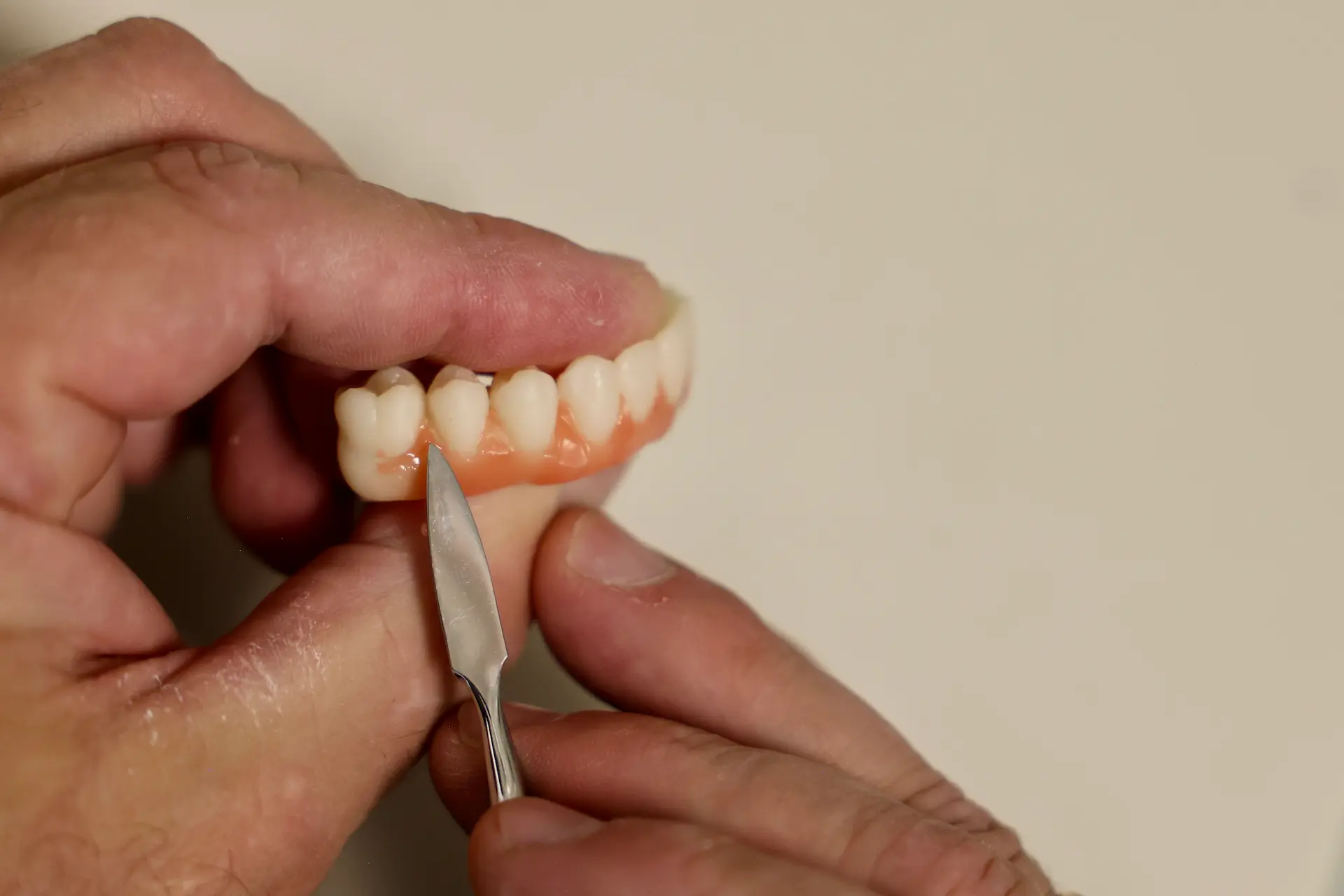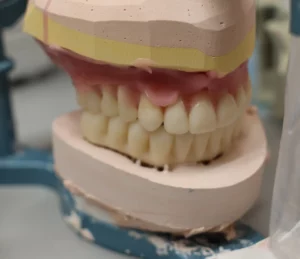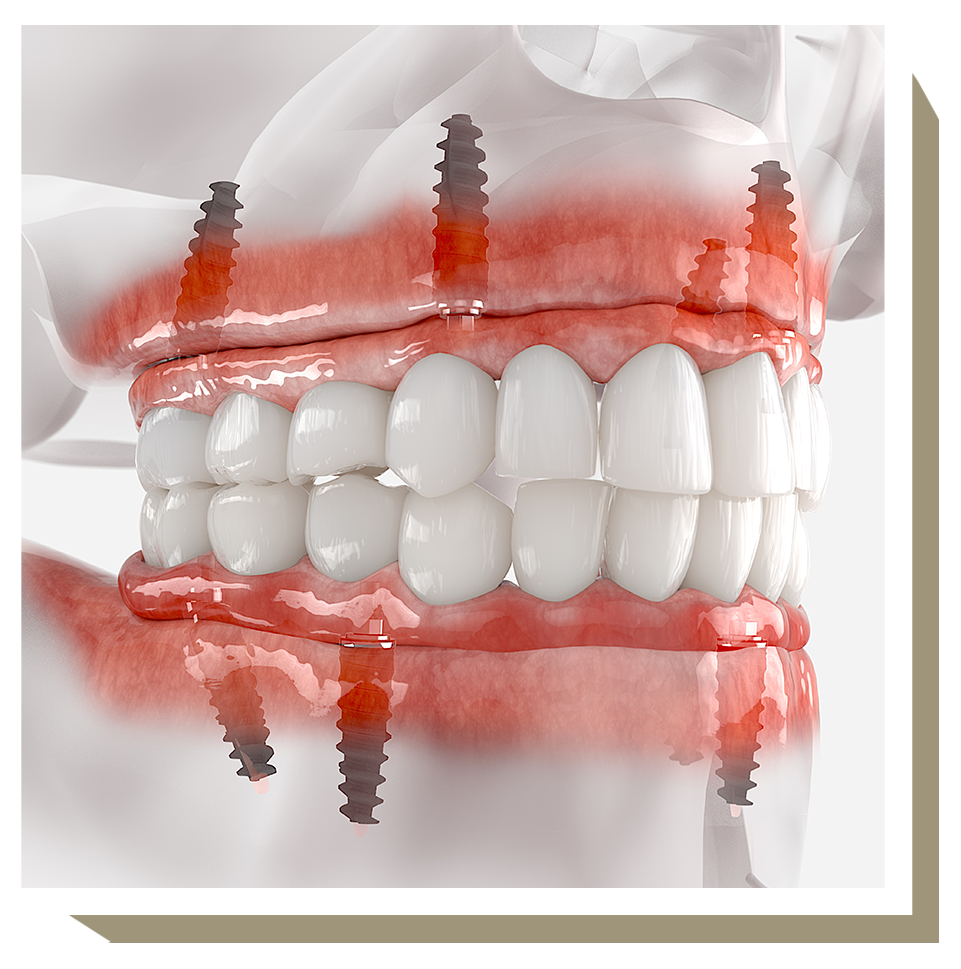As we get older most of us will experience the discomfort and embarrassment of tooth loss at some point. Aside from the immediate effects on confidence and comfort, missing teeth can have long-term impacts on the health of the remaining teeth and jawbone if left untreated.
When only some of the teeth need replacing, the two most widely used restorations are dental implants and partial dentures. Partial dentures rely on the surrounding teeth and gums to support the replacement teeth, while dental implants are permanently secured in the jawbone.
The differences go beyond stability and appearance, and choosing between dental implants versus partial dentures should be based on the advice of a dental specialist. In the meantime, we’ll clarify some of the main differences between the two.
What Are Dental Implants?
Dental implants are custom-made replacement teeth, often ceramic, that are supported by a rod-shaped implant fixture in the jawbone below. The implant fixture is usually made of titanium, not just because of its durability but also because it is biocompatible – it is easily accepted by the body’s living tissues. This allows it to fuse with the surrounding jawbone over time in a process known as osseo-integration, providing a solid anchor for the replacement tooth or teeth above.
The restoration is secured to the implant fixtures by adaptable connectors called abutments, making them highly customizable. The fixtures and abutments are strategically positioned to support individual crowns, multiple teeth, or even the entire arch on just a few implants.
Osseo-integration can take up to 6 months, and in earlier dental implant methods the replacement teeth were only attached once the process was complete. At the Advanced Dental Implant Center network of clinics, we use the latest 3D-printing technology to allow for same-day attachment of replacement teeth.
Pros Of Dental Implants
Permanent and durable
Natural look and feel
Support jawbone health
Cons Of Dental Implants
Higher upfront cost
Surgical procedure
Can require pretreatment
What Are Partial Dentures?
Partial dentures are another type of restoration used to replace missing teeth, but unlike dental implants they are supported by the adjacent teeth or soft tissues, and in many cases must be taken out each night.
Although ceramic restorations have a more natural appearance, partial dentures are often made of acrylic composites because they cause less wear and tear on the supporting tissues. They can be divided into two main types: removable and fixed.
Removable partial dentures clip into place, using either a retainer-like acrylic plate or metal clasps to support the replacement teeth. The denture is left overnight in a cleansing solution and clipped back into the mouth each morning.
A fixed partial denture, or dental bridge, also makes use of the natural teeth oneither side to support the denture, but in this case it is permanently attached. This is done by bonding either crowns or metal frameworks to the natural teeth, with the restoration supported between them.
Because the denture is supported by the surrounding teeth and gums, the jawbone beneath the missing tooth can lose density, over time resulting in changes to the structure of the jaw. This can compromise the health of remaining teeth and cause visible changes to face structure.
Pros Of Partial Dentures
Affordability
Non-surgical
Rapid results
Cons Of Partial Dentures
Stress on supporting teeth
No interaction with jawbone
Decreased bite force
Potential to come loose
Comparing Dental Implants and Partial Dentures
Partial dentures and dental implants can both be used to replace multiple missing teeth in either the upper or lower jaw. They are both custom-made to resemble the feel and function of natural teeth as much as possible and are vital to preserving the wearer’s ability to chew, speak, and smile.
With all that in common, there are still some important differences between how they achieve those outcomes, which we’ll unpack below.
| Partial Dentures | Dental Implants | |
| System | Removable/fixed framework supported by surrounding teeth and/or soft tissues | Permanent metal implant fixture integrated into underlying jawbone |
| Procedure | Non-surgical, rapid recovery | Surgical insertion of implant fixtures, 3-6 month for full integration |
| Appearance | Less enduring appearance, fit can change | Long-lasting resemblance to natural teeth |
| Comfort | Can be uncomfortable to wear, potential to come loose, reduced bite force | Close to natural feel and function |
| Long-Term Impact | Can cause additional strain on surrounding teeth | Reinforcement of jawbone and remaining teeth |
| Durability | 5-8 years | 20 years – lifelong |
| Maintenance | Overnight removal, specialized dental hygiene routine, occasional repair and replacement | Regular dental hygiene routine and checkups |
| Cost | Removable $500 – $2,500
Fixed $1,000 – $4,000 |
Individual tooth $3,000 –$6,000
Implant-supported Bridge $5,000 – $20,000 |





